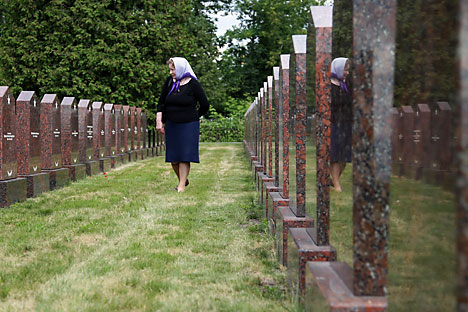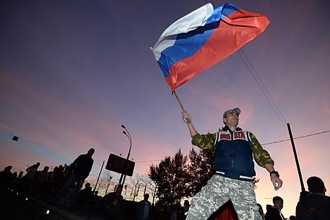Sudden rise in Russia’s mortality rate puzzling

According to the WHO statistics, Russia currently has a life expectancy of 69, placing it alongside fellow former Soviet republics Kyrgyzstan, Uzbekistan and Tajikistan, and just ahead of Kazakhstan, Nepal and Mongolia. Source: EPA
The first quarter of 2015 saw the mortality rate in Russia grow by a surprising 5.2 percent, with analysts particularly puzzled and shocked by a 22-percent rise in the death rate among those suffering respiratory ailments. Researchers are yet to determine what the reason is and are reluctant so far to attribute these figures to a single specific cause.
Russian experts are struggling to make sense of an unexpected jump in the number of deaths registered in the country in the first few months of 2015.
According to figures released by the Russian State Statistics Service (Rosstat), during the first quarter of 2015, the mortality rate in Russia – the number of deaths in the country, scaled to the size of the population – grew by 5.2 percent compared to the same period last year. The rise in mortality was registered in February and continued in March.
The total number of people who died in the first quarter of 2015 was 507,000, up 23,500 compared with the first quarter of 2014. The highest increase in mortality (22 percent) occurred among people suffering from respiratory diseases, followed by those with diseases of the digestive system (10 percent), infectious diseases (6.5 percent), and blood circulation disorders (5 percent). At the same time, infant mortality and mortality from external causes, including murder and suicide, are falling. This trend has been observed for the whole of the country.
Sudden trend baffles experts
Experts are reluctant to speculate on the basis of three months of data, saying that the figures could even out over the rest of the year, and there is insufficient data available to conclusively arrive at a reason for this sudden spurt in deaths this year.
“It is currently difficult to conjecture what this growth could be attributed to because it is not known which categories of the population showed an increased mortality rate,” said Alla Tyndik, a senior research associate at the Russian Presidential Academy of National Economy and Public Administration. “The desire to link these negative statistics to the economic crisis or to the reform of the health care system is so far unjustified.”
It is unclear what caused the spurt in the numbers of those dying between January and March this year. If the phenomenon is linked to an economic crisis, going by earlier research, statistics should show a dramatic rise in the death rate among males in the working age-group in towns and cities. That has yet to be determined.
Yevgeny Andreyev, a senior researcher at the Centre of Demographic Research, points out that life expectancy in Russia has in fact rapidly increased since 2004.
“It [life expectancy] has increased by six years since then, twice as much as in developed countries. At the same time, Russia is currently at the level that developed countries passed 50 years ago,” he said.
According to the most recent World Health Organization statistics (from 2013), Russia currently has a life expectancy of 69, placing it alongside fellow former Soviet republics Kyrgyzstan, Uzbekistan and Tajikistan, and just ahead of Kazakhstan, Nepal and Mongolia.
Andreyev attributes the improvement in life expectancy to several reasons: Russians overall now drink less alcohol, they have started to monitor their blood pressure, and there has been an increase in the number of heart surgeries.
Having said that, the number of deaths caused by blood circulation disorders has dropped dramatically, which prompts one to conclude that these diagnoses are now given only in those cases when it is impossible to find another cause, Andreyev continues.
“It is likely that when an elderly person dies and there are numerous causes of death, doctors select one that is not related to the blood circulation system. The government has set a target for the health sector to bring down the number of deaths caused by these factors, but things cannot be changed so quickly by medical and preventive measures,” he explains.
One of the categories which showed an increased mortality rate this and last year was respiratory diseases – common cold, flu and pneumonia. “There are grounds to suspect that the flu epidemic may have been at play here,” says Andreyev.
“The idea that increased mortality may have been caused by flu is further supported by a rise in deaths caused by tumors because this figure is usually very stable and in Russia little depends on health care interventions, whereas flu and the common cold may cause death in a body already weakened by another disease.”
One particular feature typical for Russia is an exceptionally high mortality from external causes (road and other accidents, homicide, suicide, etc.), says Tyndik. It is in this area that there is significant potential for reducing the mortality rate, she concludes.
All rights reserved by Rossiyskaya Gazeta.
Subscribe
to our newsletter!
Get the week's best stories straight to your inbox

